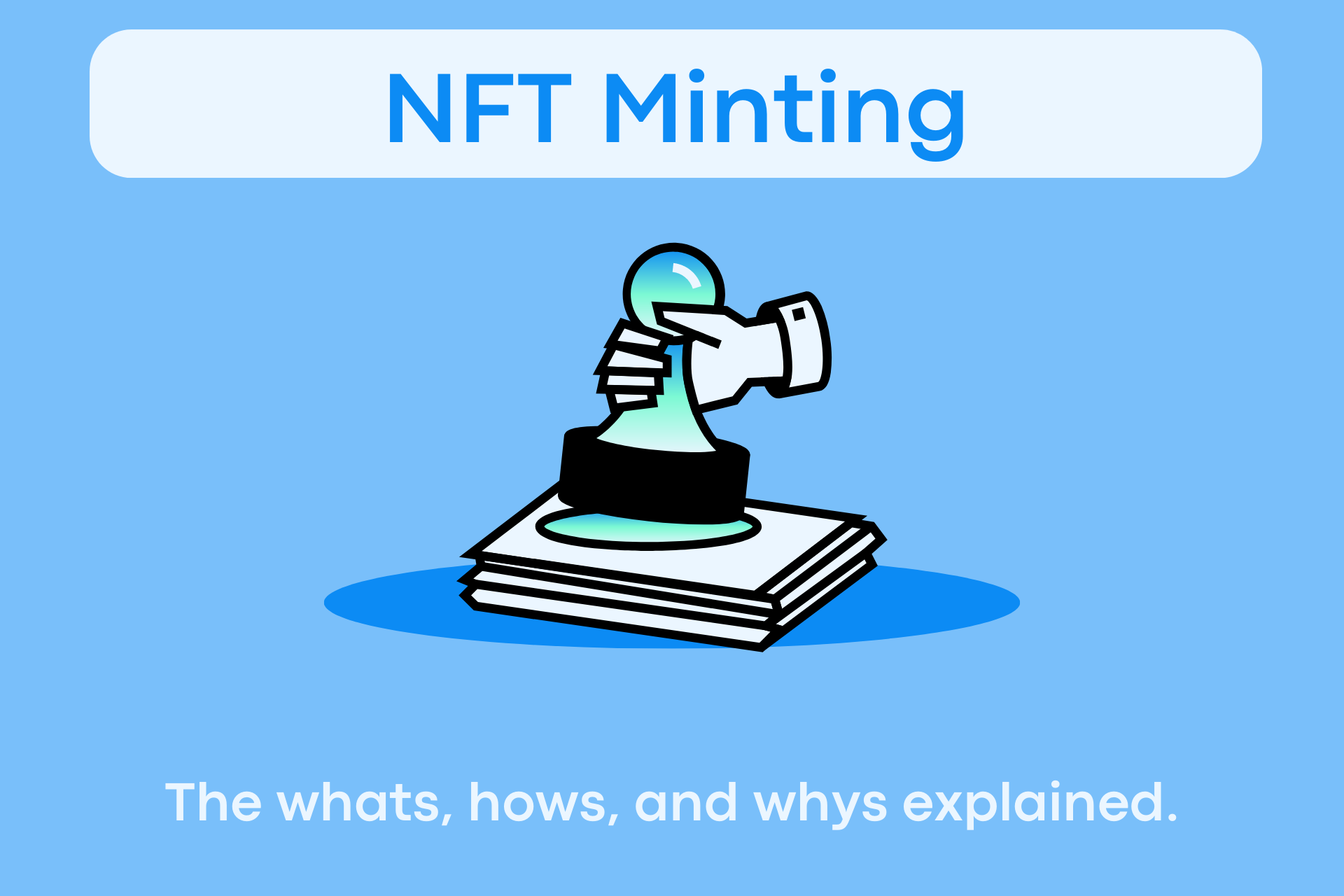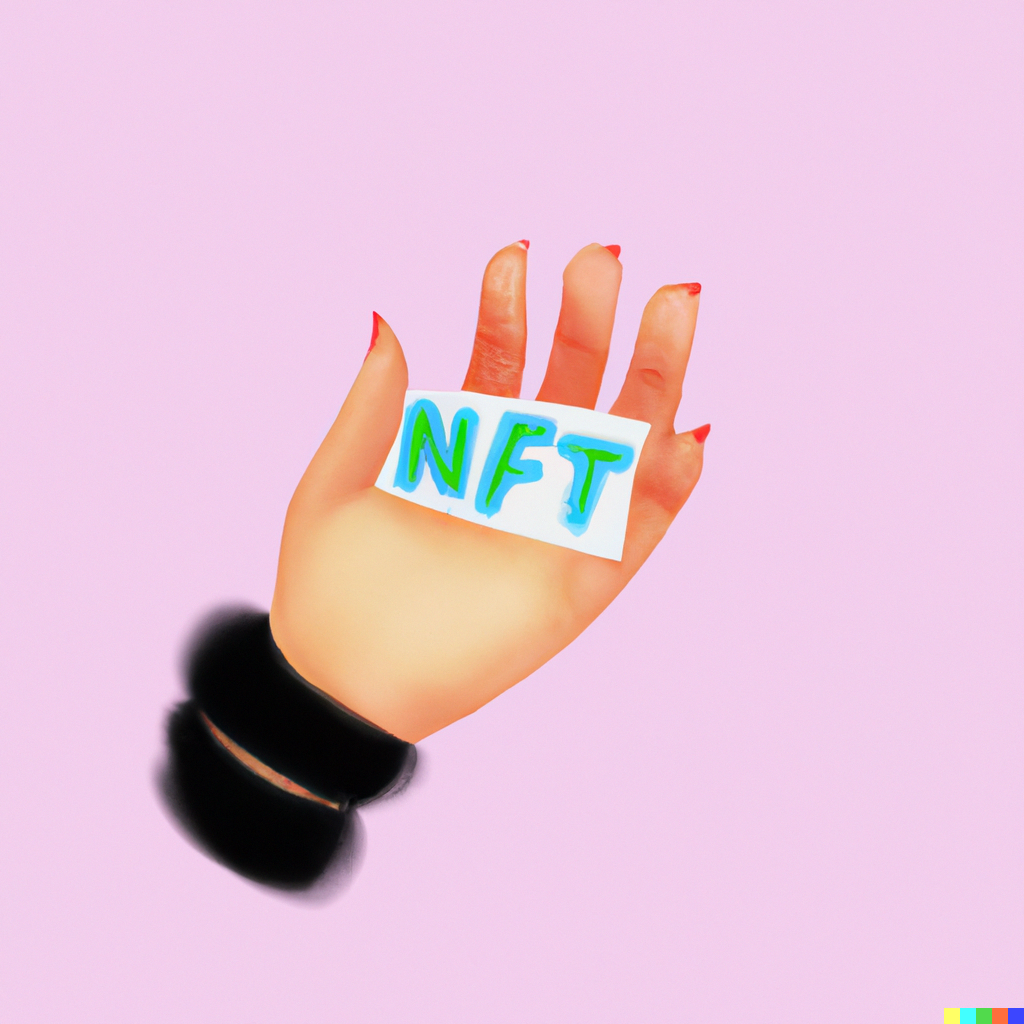Brands are increasingly turning towards NFTs to offer personalized rewards and inspire customer loyalty. Find out what it takes to create an NFT and how to get started.
An NFT, or non-fungible token, is a one-of-a-kind digital item that can represent anything from art to memorabilia. Think of it as a special digital collectible with a unique stamp of authenticity. (Check out our user-friendly NFT guide for more detail.)
In this post, we'll walk through what you'll need to mint an NFT for your business.
But first, what is “minting”?
“Minting” is just a fancy term for creating your own digital art and then deploying it onto the blockchain to be sold and traded.
When you store unique digital media on the blockchain it is permanent, with minimal chance of modification or tampering. This is because every participant on the blockchain shares the same transaction history, meaning everyone would need to be in consensus if you wanted to change a single transaction.
Blockchain's inherent resistance to malicious attacks is part of what makes it attractive to people and brands looking to offer proof of ownership.
The two main routes for minting an NFT are:
- Self-service or “DIY” mint
- With a minting partner (e.g. an agency) that handles everything.
Where are NFTs sold?
Once your NFT is on the blockchain, you can create a marketplace to list it on – or go through an existing one. Some of the most well-known marketplaces are:
- Opensea – The first and largest NFT marketplace
- Rarible – A marketplace that hosts projects from five blockchains
- Solsea and Magic Eden – Two of the biggest marketplaces in the Solana blockchain
How does NFT minting work?
NFT minting works by storing a unique digital file onto a distributed ledger (blockchain). Each NFT has metadata that describes its essential properties, like:
- A description of the NFT
- The date and time of the mint
- How many people have previously held the NFT
- Specifications and/or data that characterize the NFT
When your NFT is minted, it’s stored on systems like the IPFS (InterPlanetary File System). This system lets your NFT be stored across a decentralized network of computers, which follow the same set of rules. As a result, once minted, the metadata cannot be changed or replicated.
What happens when an NFT is minted?
When your NFT is minted, it’s stored on systems like the IPFS (InterPlanetary File System). This system lets your NFT be stored across a decentralized network of computers.
Each NFT has metadata that describes its essential properties, like:
- A description of the NFT
- The date and time of the mint
- How many people have previously held the NFT
- Specifications and/or data that characterize the NFT
Once minted, the NFT’s metadata cannot be changed or replicated.
What you'll need to launch your first NFT
Before you mint your first NFT you will need to have the following.
- A crypto wallet (e.g. Metamask, Coinbase).
- The native token for whatever blockchain you’re deploying on (e.g. ETH for Ethereum, AVAX for Avalanche, MATIC for Polygon).
- A marketplace to list your NFT. This could be on Opensea or even your own individual website storefront.
- A digital file (mp4, gif, png, membership, ticket, etc).
Top 3 NFT minting routes
1. Mint it yourself
You can mint your NFT from scratch. This would involve deploying the smart contracts, creating the art, and minting it to the blockchain.
What is a smart contract? A smart contract is an automated execution of an agreement when predetermined conditions are met.
Doing it all yourself will most likely be the most time-consuming, depending on your comfort level in front-end tech, smart contracts, and general Web3 knowledge.
Pros
- Full control over every aspect of the mint
- No cap on royalties
Cons
- Time-consuming
- Skill dependent
- Costly
- Not straightforward
- No customer support
- No marketing support
2. Mint with a marketplace
Opensea is one of the most popular minting services and marketplaces for NFTs, racking up over $32 billion in sales volume. The process is straightforward, but royalties are capped and customer support is limited.
How long it takes to mint on Opensea depends on your comfort level with the platform and Web3.
Pros
- Popular and well established
- No transaction fee minting
- Straightforward minting
- Not skill dependent
Cons
- Service fee of 2.5% of the sale price
- Royalty fees capped at 10%
- Lack of customer support
- No way of adding utility
- No marketing support
3. Mint with a dedicated partner
Lastly, you could opt for a unique, personalized minting service.
Pros
- Personalized, stress-free mint
- Credit and debit card options
- Access to customer support
- Options for utility straightaway
- Custom features
- No cap on royalties
- Marketing guidance
Cons
- Longer process
- Costs more upfront
How to make the most of your NFT collection

1. Tell people!
There are thousands of NFT collections floating around, how will your brand’s get noticed?
Build hype around the launch of your collection. It’s important that potential customers know why you’ve created an NFT and how that NFT could benefit them.
Marketing your first NFT can be daunting so consider sourcing some outside help to ensure you get the messaging and targeting right.
2. Build a community
Community is everything, even more so in the NFT space. Give people a place to talk and get excited about your project.
Some great platforms for building and nurturing a community are:
- Twitter – To give updates about the NFT collection, tease utility, and NFT features.
- Youtube – To showcase how your NFT can be used in the real world.
- Discord – A chat space where community members can congregate, suggest ideas, and give feedback.
Ultimately, it’s the community that will follow, support, and grow your project alongside you. It’s important to be building up, and taking care of, your community from the get-go. Consider recruiting a community manager who can quickly answer questions that potential customers may have.
3. Give your NFT real-world benefits
Lastly, a great way to ensure your NFT collection has some longevity is by giving NFT holders access to real-world benefits, for example:
- Gated access to special events, both virtual and in-person.
- Reward tokens for redeeming specific items and services.
- Early access to new product or service launches.
- Ticketing to easily verify authenticity and ownership.
As customer expectations of loyalty programs evolve, brands are increasingly turning towards NFTs to offer personalized rewards and build deeper connections with the customers. Don't be left behind in this digital revolution. Join the likes of Adidas, Lacoste, Starbucks, and other leading brands in leveraging NFTs and Web3 technology to redefine loyalty. Contact us today to discover how we can help you reimagine your loyalty program and create meaningful experiences for your community.




.png)







-min.png)







